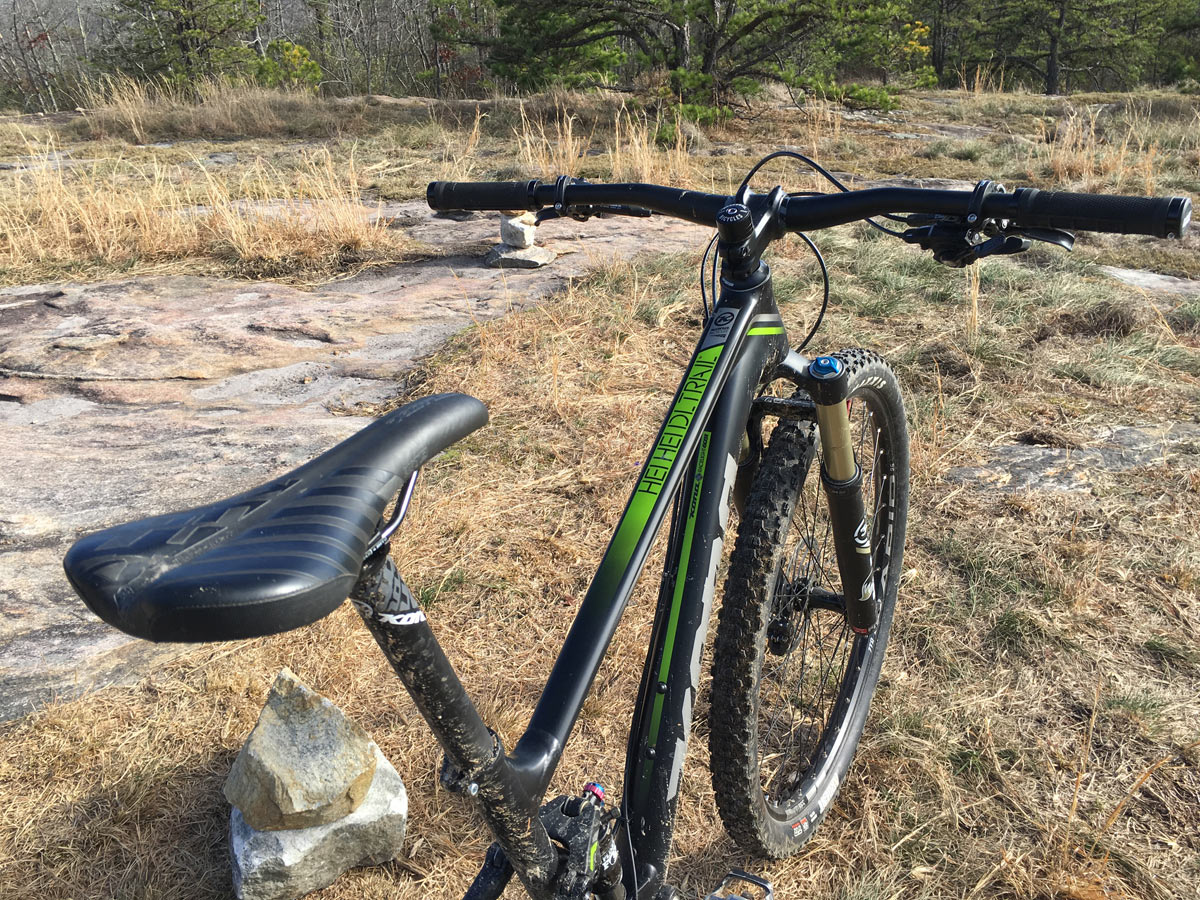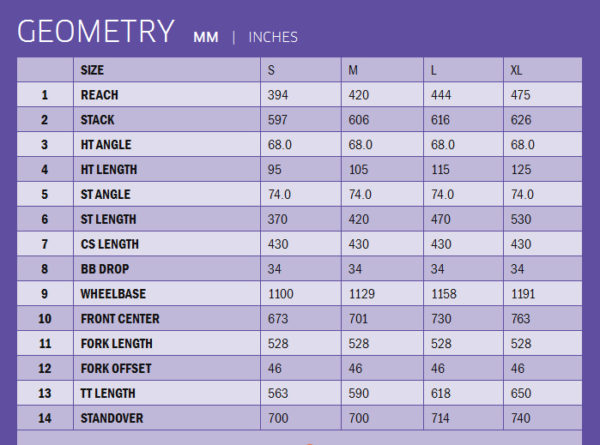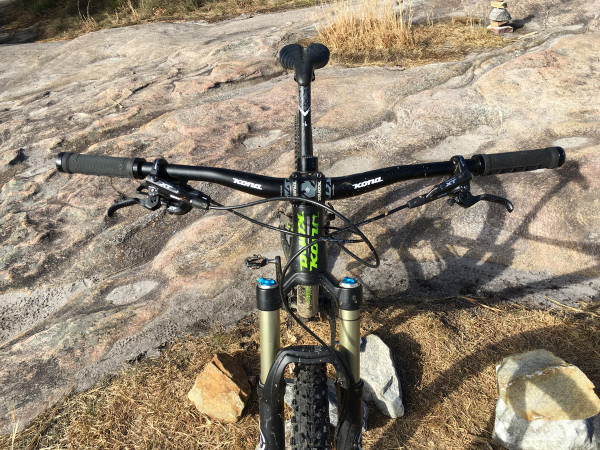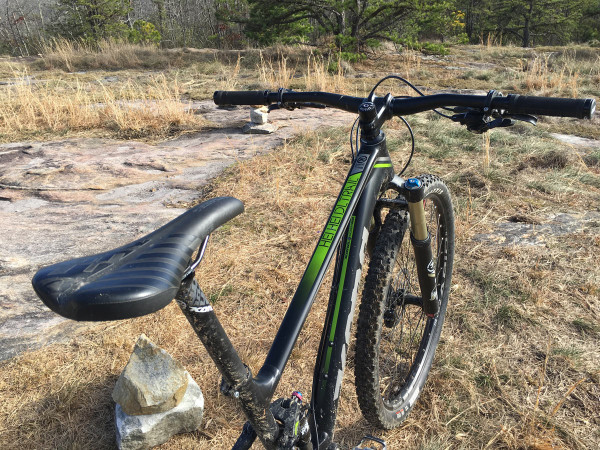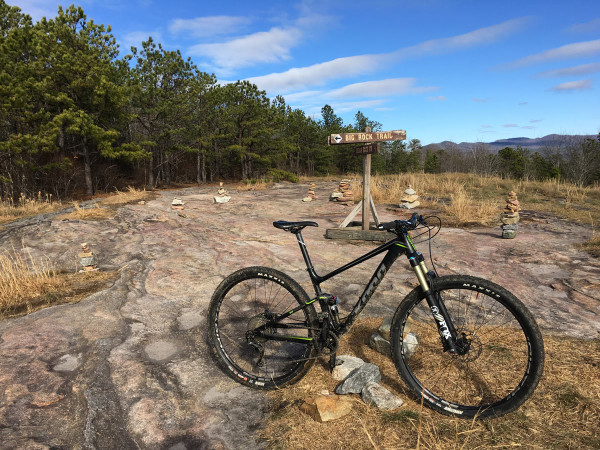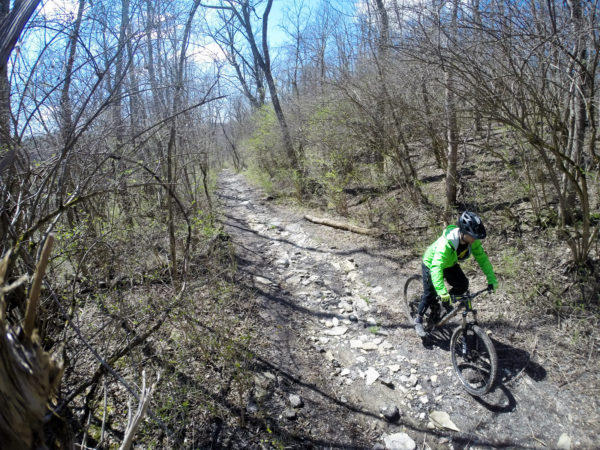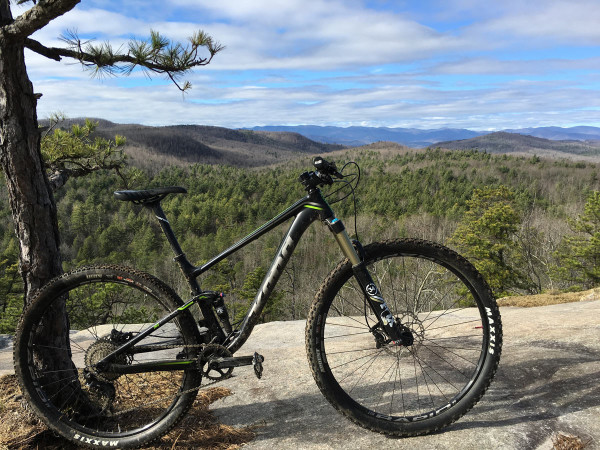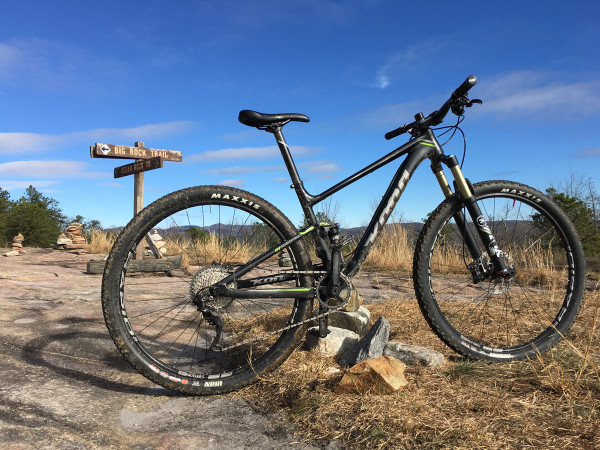
Categories. It used to be a mountain bike was a mountain bike. You’d use the same bike for trials, DH, and XC, and all in the same weekend. Now it seems like there is a category for everything – which isn’t necessarily a bad thing. Given the varying speeds, terrain, and riding styles across the full spectrum of mountain biking, having something a little more purpose built will usually improve the experience, as long as you pick the right tool for the job.
But at the same time we’re also starting to see more bikes that blur the lines between established categories. The Kona Hei Hei DL Trail is definitely one of those bikes. Possessing only 100mm of travel in the rear, the combination of 120mm up front and slightly more playful angles will leave you asking if this thing is an XC bike on steroids, or a leaned out trail bike? Yes…
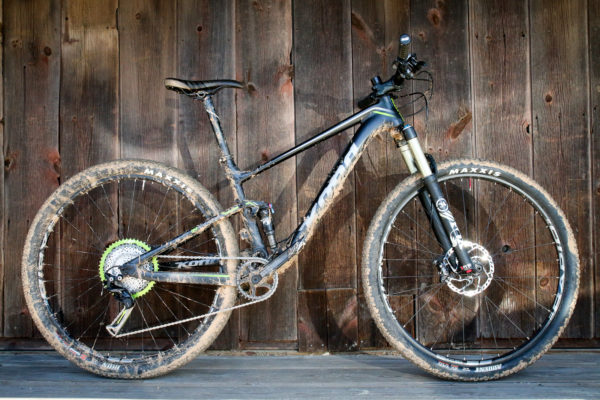
The 2016 Kona Hei Hei DL Trail is a bike that comes from a family of split personalities. The aptly named Hei Hei DL Race (both bikes are also available in slightly less expensive builds), uses the same Kona Race Light 6061 butted aluminum frame with 100mm of travel squeezed out of their Fuse Independent Suspension system. Essentially a modified single pivot that relies on a small amount of flex from the flattened seat stays, the suspension on the Trail DL is handled by a Fox Float Performance rear shock rather than the RockShox Monarch RL on the Race.
The other huge difference in terms of spec and performance between the two bikes is the choice of fork. The Race is meant to be a race bike, so it is spec’ed with a 100mm travel RockShox Reba RL set at 100mm of travel. The DL Trail bumps this up to a 120mm travel Fox 34 Performance. This not only has a big effect on the handling and performance of the front end, but it results in a subtle change in geometry with 1º slacker angles at the head tube and seat tube. Between the longer travel and slightly different geometry, the trail bike designation is hit home with a 1x drivetrain, wider bars, and a shorter stem. As we’ve seen with the 2017 carbon varieties, the Trail version steps it up even more with the addition of a dropper post.
If you’re wondering how that geometry compares to the thoroughly trail focused Process 111, it has the same 68º head tube angle and 74º seat tube angle, though the Process ends up with a longer top tube and front center. This was noticeable on the bike, as I thought to myself that I wished the top tube was just a little longer which is surprising considering I’m typically between a small and a medium (I’m 5’8″) on many 29ers. After riding a number of recent trail and enduro bikes, the shorter front center is noticeable, but not a deal breaker. Other than that small quibble, the geometry of the Hei Hei DL Trail is an excellent balance between all day XC and Trail. I really like the fact that the stand over is excellent while maintaining plenty of room for a bottle cage inside the triangle as well as ample room for a dropper post.
As you would expect from a bike with Trail in the name, the Hei Hei comes with a properly wide 750mm Kona XC/BC 35 riser bar and short(er) Kona XC stem, along with ODI Ruffian MX lock on grips.
The seat and seatpost include a WTB Volt Comp and another Kona house brand part in the Thumb offset post. Honestly, there are surely lighter parts out there, but the Kona branded parts worked as they should and wouldn’t leave me wanting to upgrade due to sizing or other concerns right away.
The stock wheels and tires add to the smart component package, with Stan’s ZTR Rapid 25 rims laced to Novatec 15×100 and 142 x 12 hubs with stainless 15g spokes. Tires include Maxxis Ardent EXO TR 29×2.25″/IKON EXO TR 29×2.2″ which mount up tubeless quite easily. That leaves the drivetrain and brakes which are all Shimano XT except the RaceFace Aeffect Cinch crank and KMC X11 chain.
In most situations the stock drivetrain was adequate, but after riding around Pisgah and Dupont, I was wishing for a wider range of gears. The addition of the OneUp Shark group made a big difference and would definitely be an upgrade I would consider if I owned the bike. Note that the Shark does require a different chainring with a greater offset to the inside for ideal chainline (49mm vs 51mm). I tried it initially with the stock RaceFace ring and the drivetrain was not happy. There is also a removable front derailleur mount so if you wanted to add a front derailleur, you could – and with the Cinch crank you could simply add a 2x spider to get there on the gearing.
Stock, the medium bike came in at 27.69lbs (12.55kg) set up with tubes – I rode the bike tubeless, but weighed it as shipped. Retail price is $3299 complete or $1699 for the frame and shock.
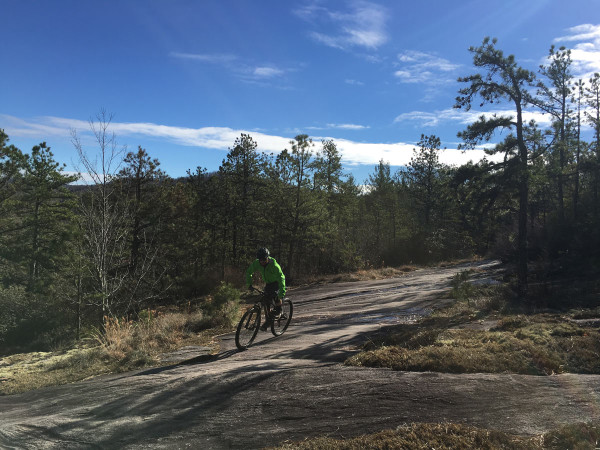
The Ride
I’ve already proclaimed my affinity for slacker, short travel trail bikes, and the Hei Hei DL Trail seems to check off a lot of boxes. Realistically though, I’d say the Hei Hei falls a little more into the XC category than the Trail category. Put it in a high gear and the bike flies through woods without the nervousness of a stereotypical XC geometry, which is really where the bike shines. The Hei Hei is really a bike that you could spend all day riding your local trails and still jump in on the local XC or short track races and do quite well.
The choice of components really stands out as it provides a build closer to what you would choose on your own given the opportunity. Really, the only knock to the component spec would be the loose ball headset – which only became apparent when I tried to install our Ohlins test fork. The Ohlins RXF uses a built-in crown race which is not compatible with the stock headset on the Kona.
Tire clearance is something to consider when purchasing the Hei Hei as even with the 2.25 Ikon in the rear, it still managed to rub on stays when it was muddy. You won’t get much bigger tires in the frame, which alludes to its XC lineage.
While the Fox 34 fork offers an incredibly confident front end (especially with the 35mm bar and stem), at times it feels a little over spec’ed compared to the rear. While riding in North Carolina, I found myself pushing the bike past its comfortable limits, but with the limitation coming from the back of the bike rather than the front. With that said, it is an incredibly capable and impressively stiff XC bike that will be more than adequate for a majority of users.
My advice would be if you look for every little undulation of the trail to be used as a jump, you’d be better off with something like the Process 111 DL. However, if you consider any air to be “big air” and want a bike that is comfortable, relatively light and affordable, and easy to ride fast, the Hei Hei DL Trail is an excellent machine. Bikes like this are the perfect choice for riders who dabble in XC racing but will be simply riding trail for the majority of the season.
